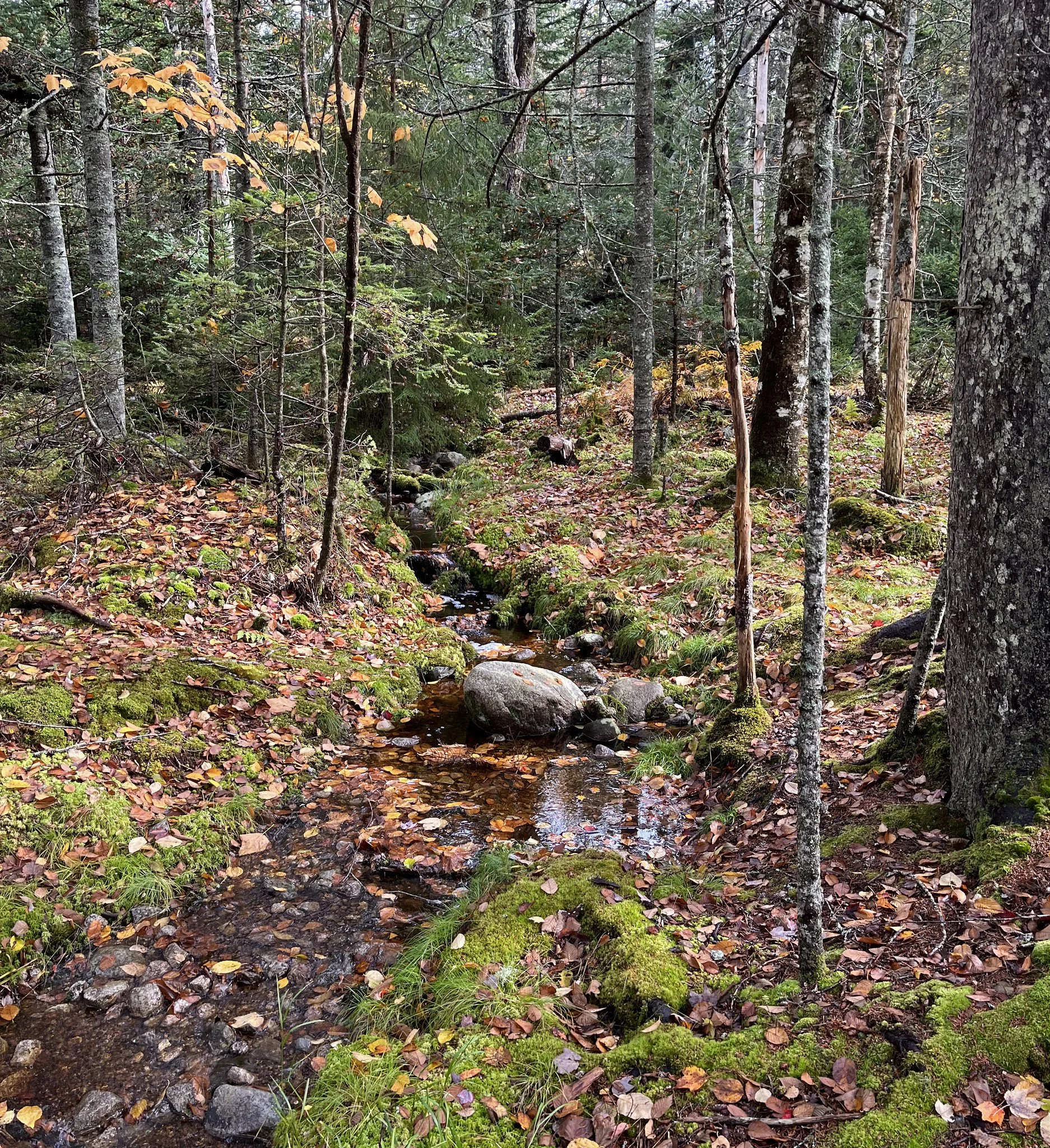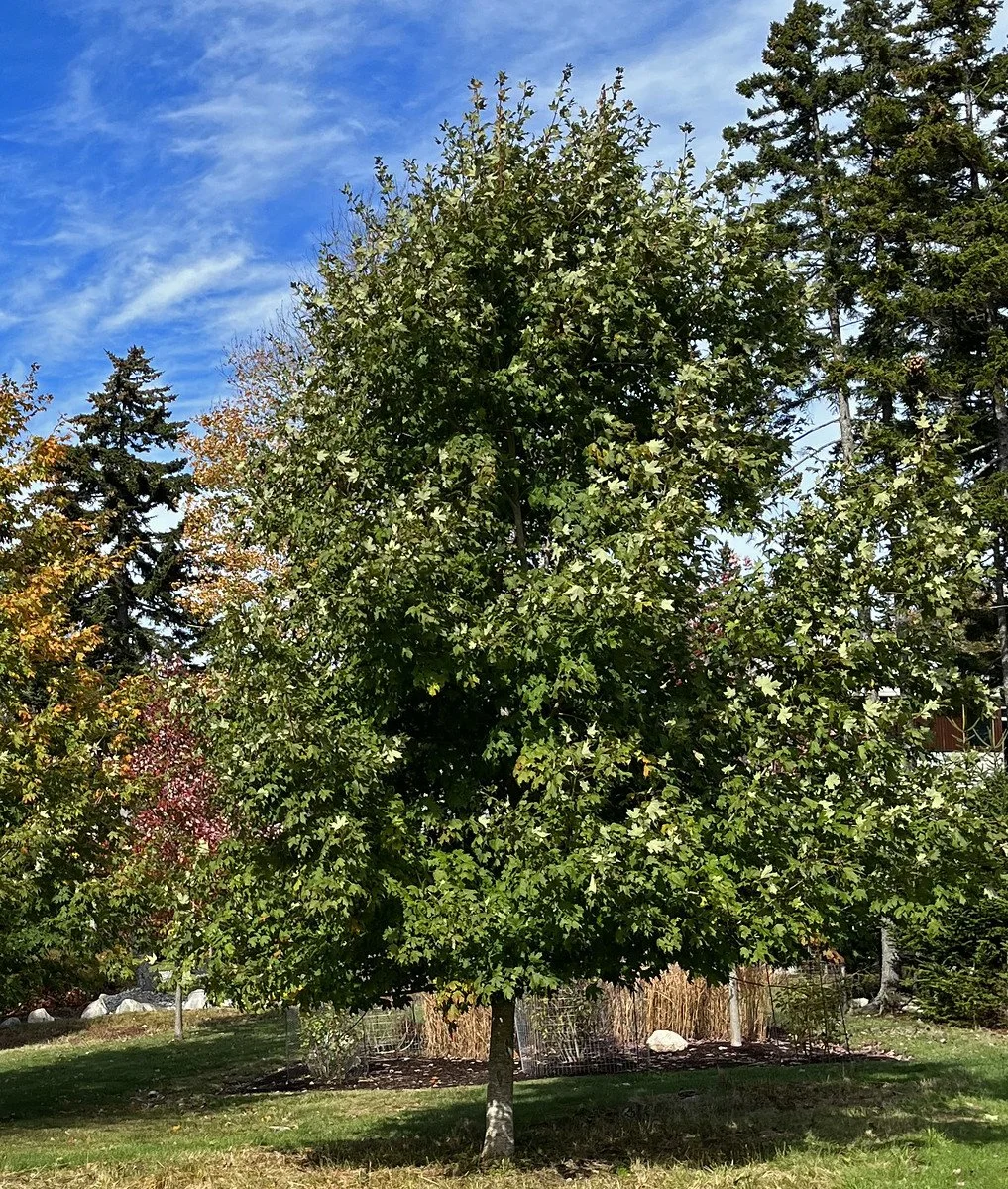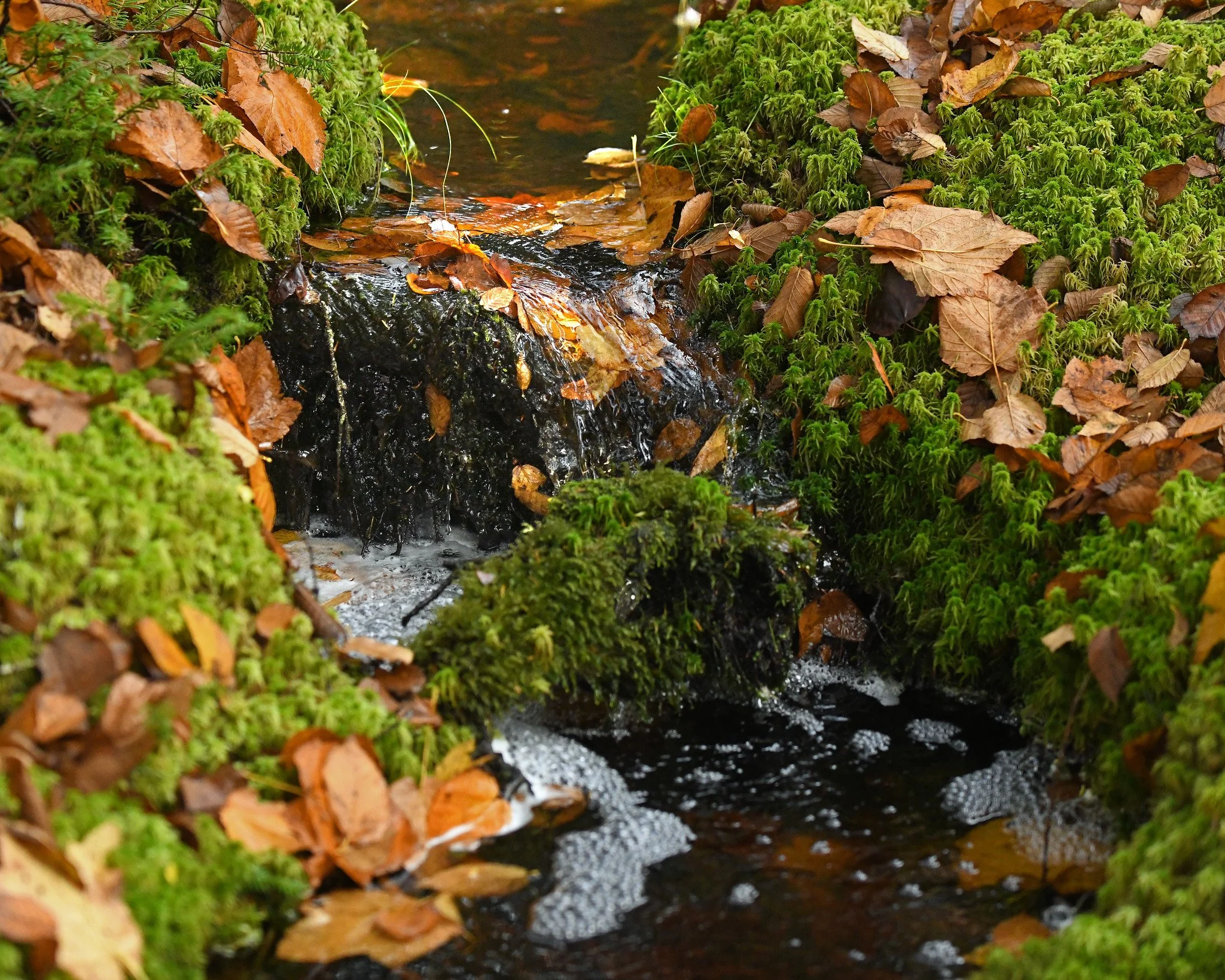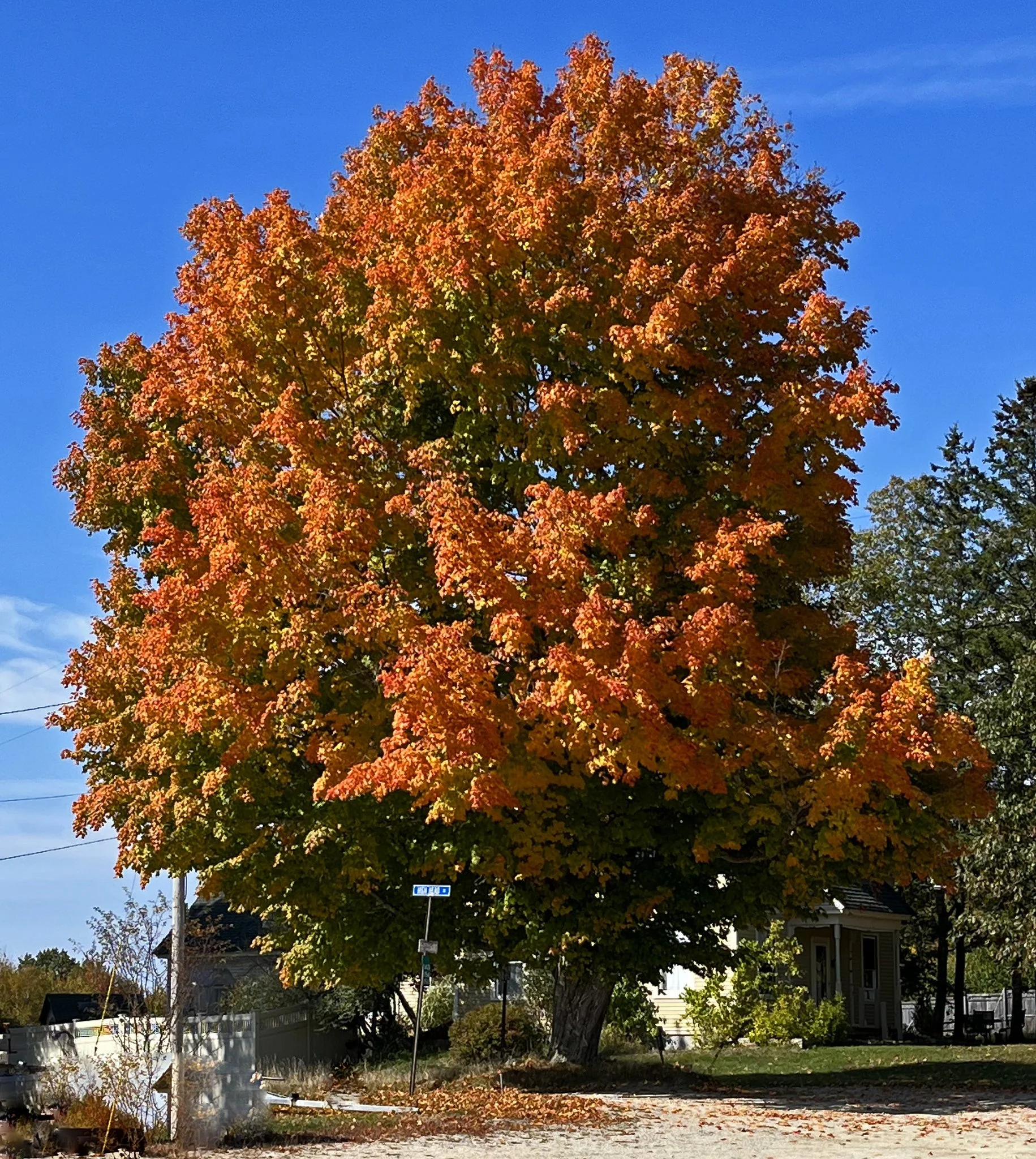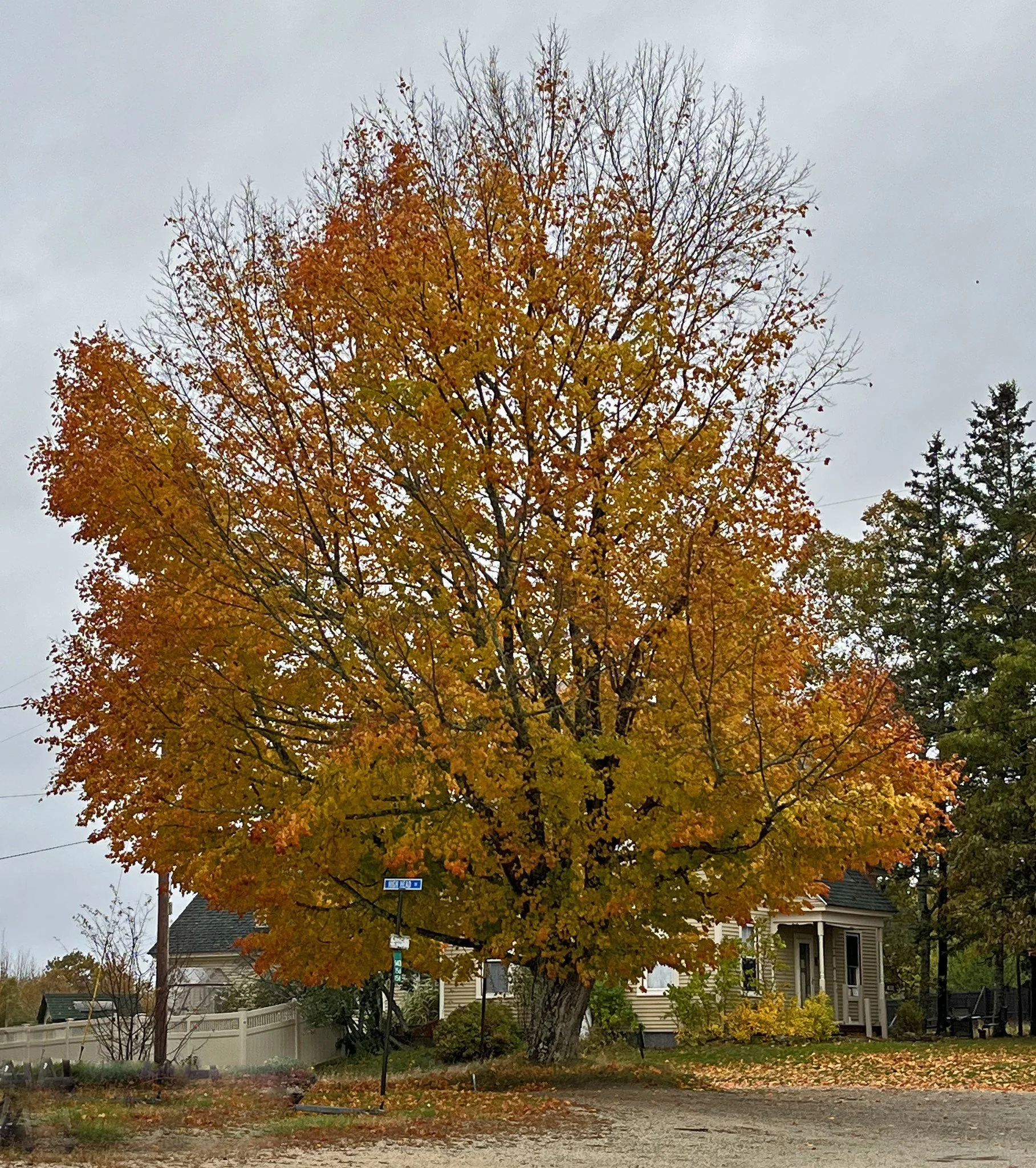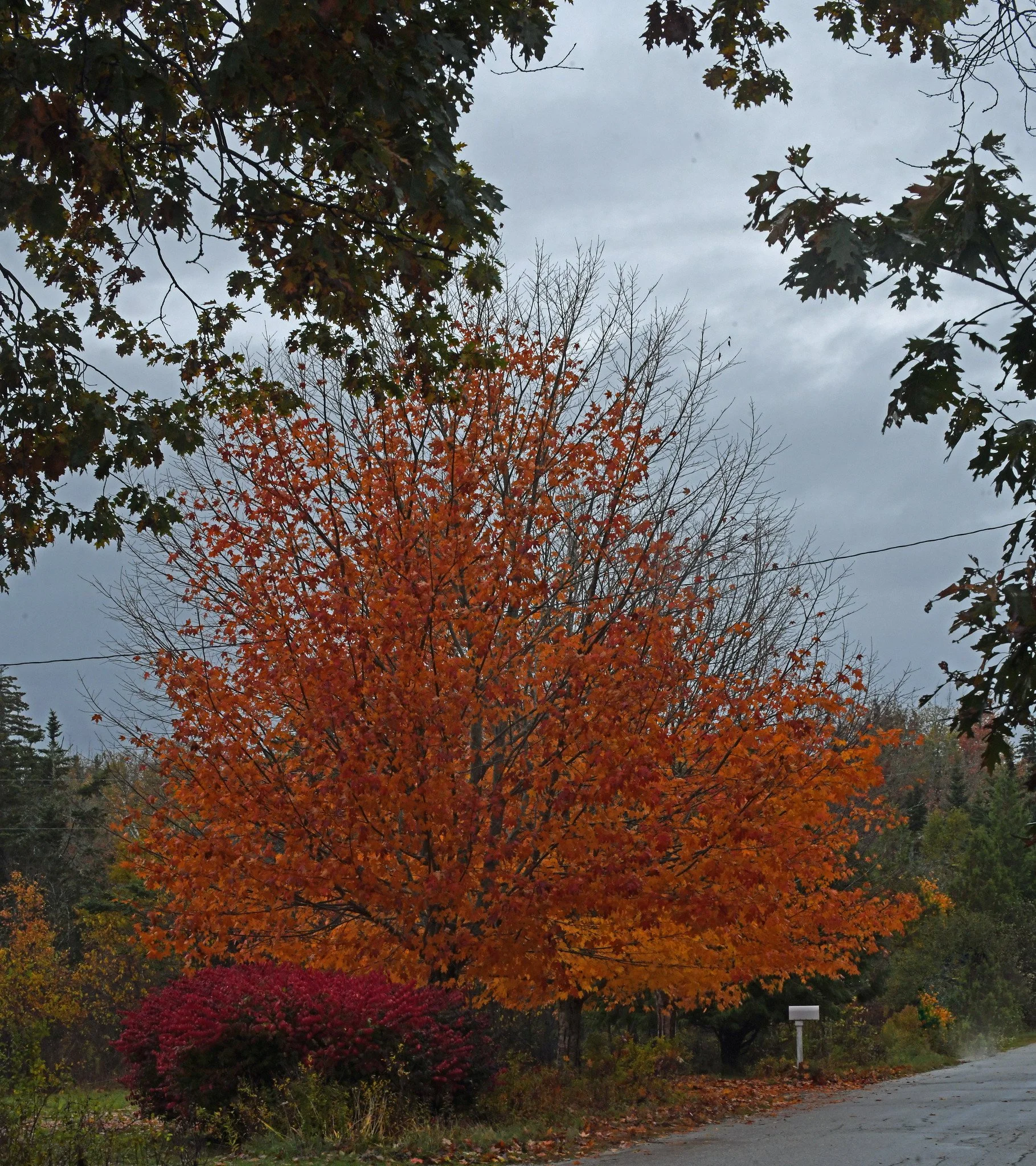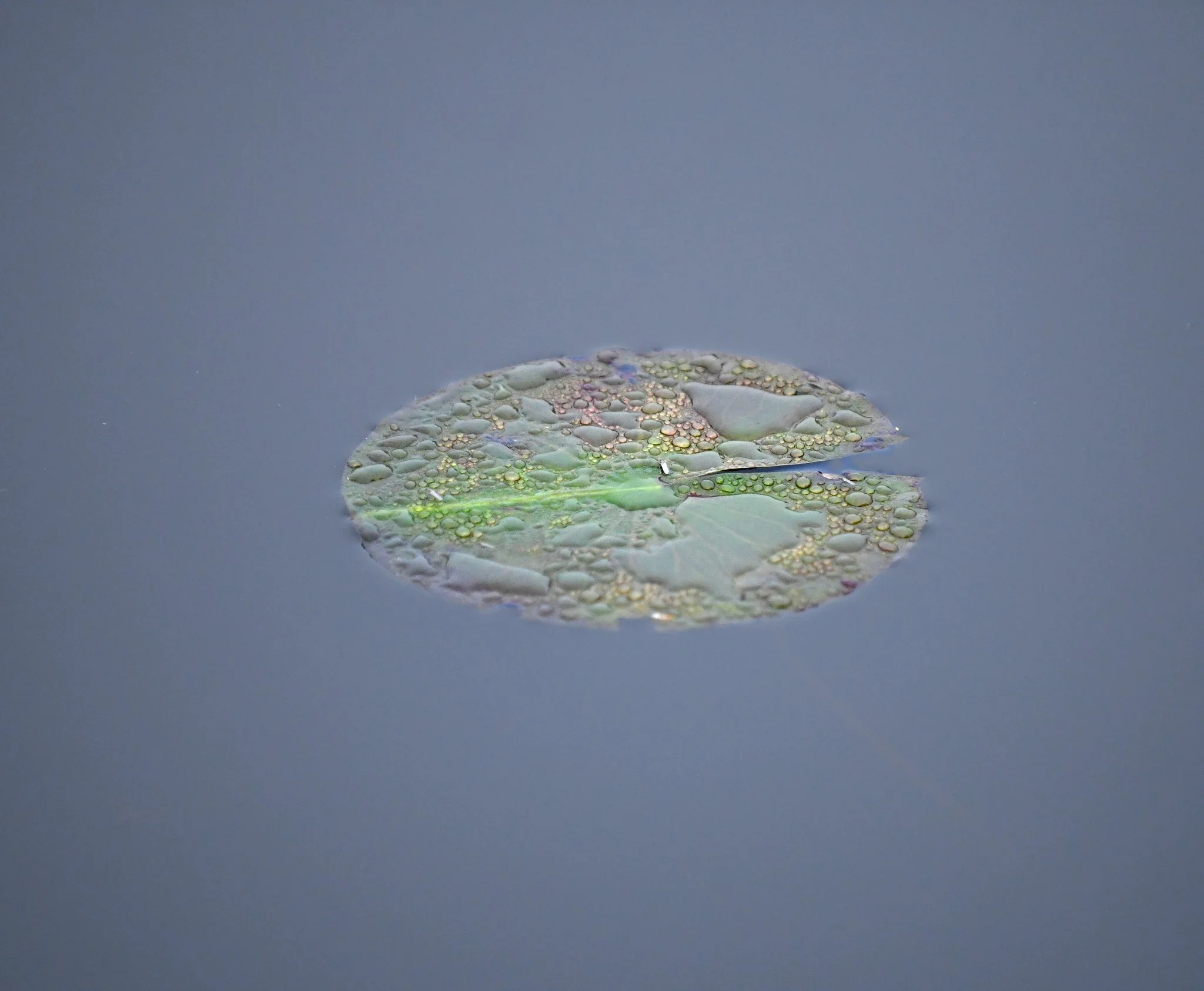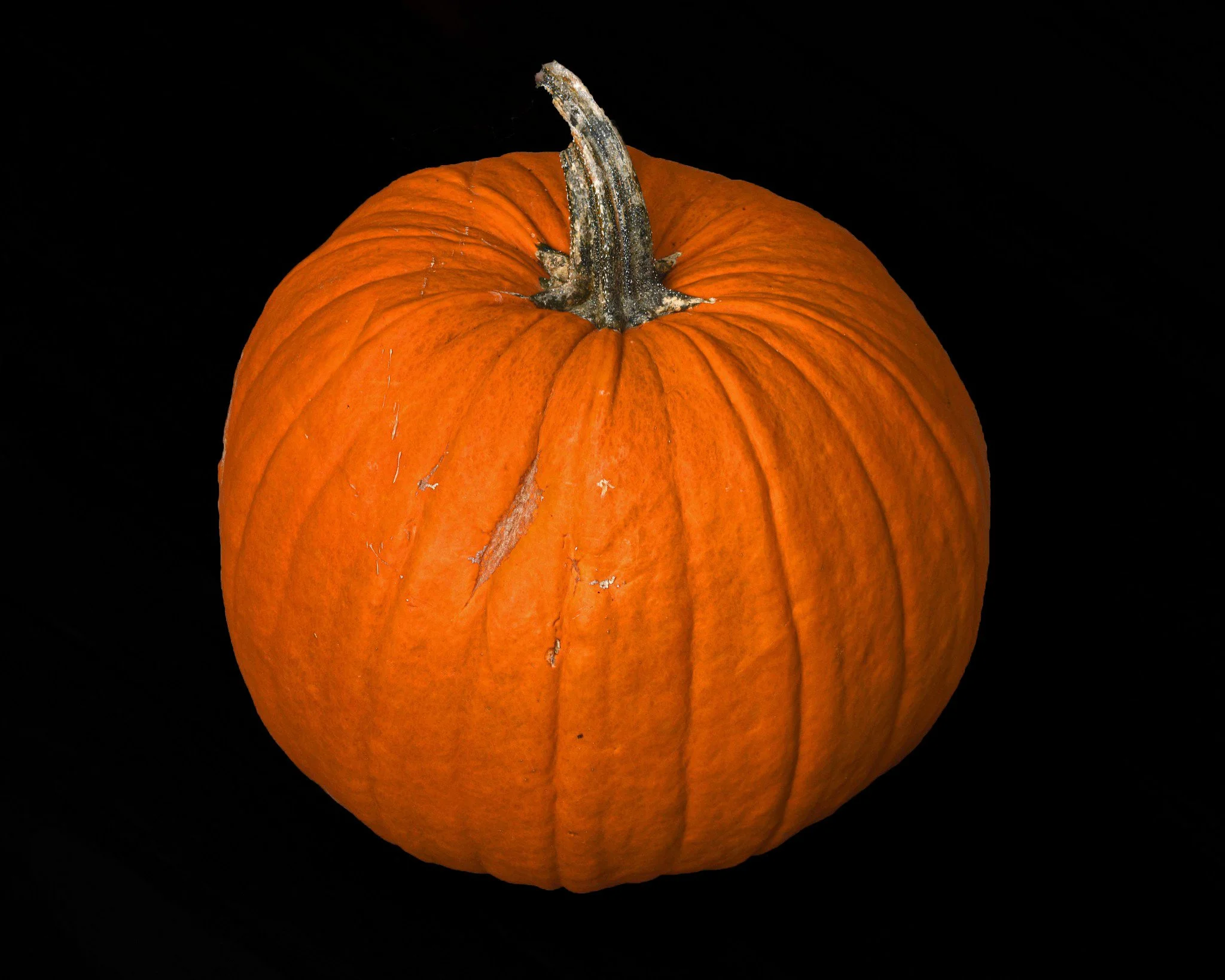October is one of the more sensational months here on the Down East Coast. It begins with fall foliage that gets better and better as the month goes on then implodes with a cascade of falling colorful leaves. It ends with Halloween, a time of pretended fear and real fun. And, in between, there is the exhilaration of a changing season.
The foliage this October was about average, which means it was beautiful. The colors ranged widely from the reds of blueberry fields to the burnished golds of maple trees, all of which were sometimes transformed dramatically by fog, rain, and the magic light of sunrise. And, of course, the chrysanthemums always delivered their promise.
Sheets of rain and blankets of fog this October overcame the abnormal dryness that has plagued us for over a year. The brooks were gurgling, the ponds were brimming, and freshness pervaded the balsam-scented woods.
The Winterberry fruits this rainy October were more bountiful than they have been for decades, as were the bunched Mountain Ash berries. Unfortunately, so were the yellow husks and red berries of the very invasive Asian Bittersweet vines.
October and September are mowing months. Many of our fields are left fallow for spring and summer wildflowers and wildlife, but need to be mowed annually to prevent their being taken over by such quick-growing things as raspberry bushes and young conifers.
As for our fauna, the heavier, gray winter coats of our White-Tailed Deer are growing in well as are the darker winter coats of Red Squirrels. We still had well-camouflaged Garter Snakes and American Toads slithering and hopping among the fallen leaves in October, but they seemed to disappear into their winter hideaways before the end of the month.
On the waterfront, many of our lobstermen (male and female) were winding down their season in October — bringing in their traps for winter storage and working fewer days. The lobster season was a disappointment this year, especially compared to last year’s record prices and catches.
Recreational boats also continued to be stored in boatsheds for the winter or wrapped in protective plastic during the month.
Of course, October may be best known for its last evening, Halloween. Decorations for Halloween appeared very early in the month and the annual Brooklin Elementary School Halloween parade took place, as usual, on the last school day before the spooky eve.
Finally, October’s less humid, colder air and our shifting view of the sun brings the first of our colorful winter sunsets and their afterglows.
(All above images were taken in Brooklin, Blue Hill and North Sedgwick, Maine, during October 2022.)



















































































